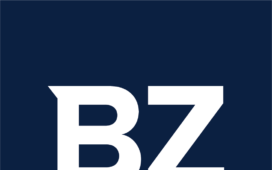The Ghanaian cedi has surged nearly 50 percent against the US dollar in 2025, outperforming all other global currencies.
Price action shows the cedi began the year near the ₵15/$ level and now trades close to the ₵10/$ resistance line.
Investors are encouraged by the currency’s rapid appreciation as the leading gold producer works to recover from its economic crisis and debt default.
The cedi opened Monday at GH₵10.21, up 7% from Friday’s closing price of GH₵10.25/$. According to Bloomberg data, the Ghanaian cedi is currently the world’s best-performing currency in 2025. This recovery stands in stark contrast to 2022, when it was the worst-performing currency, losing over 55% of its value due to an inflationary spiral and debt crisis.
Bank of Ghana remains hawkish despite falling inflation
The cedi’s recovery has also been aided by falling inflation, which dropped to 21.2% in April.
Bank of Ghana Governor Johnson Asiama remains cautious, stating, “Stability doesn’t mean fixation.” He emphasized the importance of balancing currency strength with export competitiveness in domestic markets.
The rally—unexpected by some investors—offers a much-needed boost as Ghana continues to emerge from a crippling economic crisis and debt default. While the cedi’s performance has revitalized business confidence, the central bank chief remains wary of excessive optimism, reinforcing that currency management must remain dynamic and balanced.
BoG Tightens Policy to Support Currency
The Bank of Ghana (BoG) has implemented strict monetary policies and intervened in the forex market to curb capital outflows. In March 2025, it surprised markets with a 100-basis point rate hike, raising the policy rate to 28% to combat inflation and attract foreign investment.
The BoG also transitioned to spot-market forex auctions, moving away from speculative limit-order-based flow controls. This shift has improved dollar availability to businesses and reduced speculative dollar hoarding.
Commodity Revenues Fuel FX Reserves
Rising revenues from commodities—especially gold and cocoa, Ghana’s key exports—have been crucial in strengthening the cedi.
Ghana’s rise to become the sixth-largest gold producer globally has had a transformative economic effect. Gold prices surged from $2,000 per ounce in 2024 to $3,400 in May 2025, boosting export earnings from $7.6 billion in 2023 to $11.6 billion in 2024.
The Gold Board initiative, which mandated domestic gold purchases be settled in cedis prior to export, increased Ghana’s gold reserves from 9 tons in late 2023 to 31 tons currently. As a result, foreign exchange reserves reached a record high of $11.4 billion by March 2025, significantly reinforcing the cedi.
Oil and non-traditional exports, alongside gold, pushed Ghana’s trade surplus to a long-term high of $4.3 billion in 2024.
IMF Lifeline Aids Recovery
Another key factor has been Ghana’s ongoing three-year International Monetary Fund (IMF) program, which includes a $3 billion bailout. The program emphasizes a return to demand-management economic policies to restore macroeconomic stability after the volatile period from late 2022 to late 2023.
Austerity measures taken by the government—such as halting ₵65 billion in arrears payments and reducing Treasury bill yields from 28% to 15%—have eased debt pressures and restored investor confidence.
Political stability, largely credited to President Mahama’s sweeping economic reforms, has further bolstered market sentiment.
However, economists caution that monetary easing could be delayed due to rising utility prices and persistent inflation risks. Inflation remains above the BoG’s 6–10% target band. Aggressive rate cuts at this stage could reignite inflation or trigger speculative attacks on the cedi.





